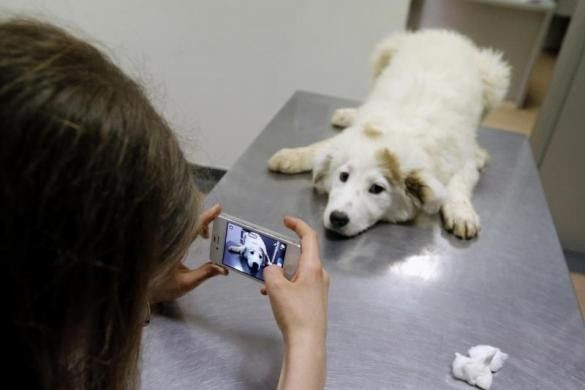My Owner is Mine: Dogs Get Jealous Too, Study Reveals

Jealousy is the cheapest emotion yet extremely complex an expression.
It was believed that only humans, being truly possessive about every bit of their belongings get to feel this specific emotion.
But this latest study led by psychology professor Christine Harris from the University of California, comes up with the first ever experimental proof that dogs can be jealous too.
The work which got published in the journal PLOS ONE showed that dogs don’t really like when their owners pay more attention to another dog.
The results support the opinion that there can be a more basic form of jealousy that evolved to protect social bonds from interlopers.
"Our study suggests not only that dogs do engage in what appear to be jealous behaviours but also that they were seeking to break up the connection between the owner and a seeming rival. We can't really speak to the dogs' subjective experiences, of course, but it looks as though they were motivated to protect an important social relationship”, Harris explained.
The experimental set up was designed with 36 dogs being studied at their own homes. And subsequent reactions of every dog were videotaped while the owners were made to ignore them over a stuffed, animated dog or a jack-o-lantern pail.
Under both conditions, owners were asked to treat the objects as if they were real dogs; with a few affectionate patting on their back or other gestures. In the third situation, the owners were requested to read aloud a pop-up book which played melodies. This was followed by coding of the videos by two independent raters to check for variety of aggressive, disruptive and attention-seeking behaviours displayed by the dogs.
“According to the report published in Deccan Chronicle, it was found that dogs were about twice as likely to push or touch the owner when the owner was interacting with the faux dog (78 per cent) as when they were attending to the pail (42 per cent). Even fewer (22 per cent) did this in the book condition. About 30 per cent of the dogs also tried to get between their owner and the stuffed animal. And while 25 per cent snapped at the "other dog," only one did so at the pail and book.”
Harris interpreted further that the dogs treated the stuffed animal as a real opponent.
So love your little one some more from today. They really value your worth.





















